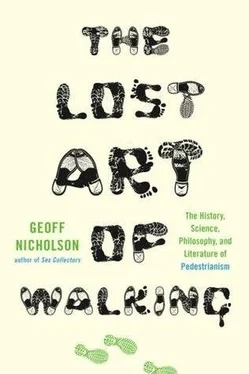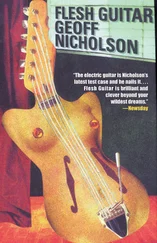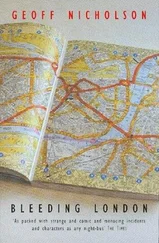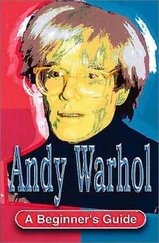♦
There is in Los Angeles these days a place called Raymond Chandler Square. It isn’t a square in the usual sense, but rather an intersection where Cahuenga and Hollywood boulevards meet. It’s pleasing in a way that Raymond Chandler Square is so ordinary, so unfancy. It’s the kind of place where the businesses don’t seem to be in it for the long run — but the last time I looked, the four corners offered a Greek pizzeria, a Popeyes chicken and biscuits restaurant, a place for cashing checks, and, more substantially, a big, serious anonymous bank building that is a contender for the fictional Cahuenga Building, which was where Marlowe had an office in Farewell, My Lovely .
Hollywood Boulevard is one of the places where people do actually walk in Los Angeles. When people like me complain about the lack of street life in L.A., other Angelenos tend to say, ‘Go to Hollywood Boulevard if you want some street life, man’. They mean that Hollywood street life is all about drugs and sex, runaways, people fresh off the bus, boys up to no good, the improbably and ill-advisedly transvestite, the kind of people who need piercing and tattooing parlors and smoke shops, who find themselves sitting on the sidewalk, with a dog on a string, eating pizza and bumming cigarettes, the mad, the lost, the winsomely deranged. One of my recent favorites was a guy, youngish, clean, healthy-looking, pushing a baby carriage full of his belongings and singing, ‘The devil’s been defeated and you can all go to hell’. Everyone, including me, will also tell you that it used to be a whole lot worse.
These days there are also plenty of tourists walking on Hollywood Boulevard as well, and many of them look frankly bemused. They know they’re in Hollywood, they know that they’re on the legendary Hollywood Walk of Fame, and yet they don’t quite know what they’re supposed to be doing there. Taking the names of people you admire and putting them in stars on the sidewalk where people can walk all over them still strikes me as an odd and not very respectful thing to do.
And of course some people do far worse than walk. You can imagine my ambivalent glee when I discovered the existence of something called the Hollywood Entertainment District Public Urination Map, charting every act of public urination observed by the area’s security guards. You might think that part of a security guard’s job might be to prevent public urination rather than merely observe it, but it’s probably a hard thing to stop, certainly once the perpetrator is in full flow. No doubt a great deal of unobserved urination must go on, too. This is one of the unavoidable facts of walking on Hollywood Boulevard: anywhere you go not only has somebody walked there before you, somebody has probably pissed there as well.
If putting stars’ names in the sidewalk is odd, then taking photographs of them seems even odder, yet every time I go along Hollywood Boulevard I see people snapping away at the ground, at the stars, sometimes even filming them. And I’m always amazed which names they choose to photograph. I began to take note. In quick succession I noticed people photographing the stars of Sylvester Stallone, Michael Jackson, and Olivia Newton-John. I’ll let the historians of pop culture sort out the reasons.
The Walk of Fame runs east/west along the boulevard from Gower to La Brea, and north/south on Vine Street from Yucca to Sunset, forming a long, thin cross. The names at the far west end are Spanky McFarland and the Dead End Kids. At the eastern end it’s Benny Goodman and Stanley Kramer. On Vine Street we run from Jeff Chandler and Texas Guinan in the north down to Franklin Pangborn and Edward Small.
If you protest that these are no longer household names, then I suppose that might be the whole point. The names are written in concrete (actually brass set in terrazzo), but their fame is no more permanent than if it were written in water. The Walk of Fame might remind you that showbiz just isn’t the place to look for permanence.
I’ve often tried to determine whether there’s any logic to the placement of the stars. The current A-list is certainly represented in the forecourt outside Grauman’s Chinese and the Kodak Theatre, which is what you’d expect. And some of the stars outside the Capitol Records building on Vine certainly belong to recording artists, but by no means all.
Surely there’s more insult than irony in the fact that Edith Head’s star is outside Lady Studio Exotic Shoes. Why does the crew of Apollo 11 have four separate stars and why are they all at the intersection of Hollywood and Vine? And I wonder how Gary Cooper and Sylvia Sidney might have felt about having their stars placed outside the Frolic Room, a bar famous for its cheap beer and pickled eggs. But I imagine they’d be happier than Fritz Lang and Orson Welles, who for a long time were outside the entrance of the DMV until it moved recently.
There is one man who never walks down Hollywood Boulevard, and that’s a man with no feet and one leg who polishes some of the stars. He does it of his own volition and he doesn’t beg for money, but people who think he’s doing a good job slip him a couple of dollars. And there are other people who adopt the star of their particular hero or heroine and keep it clean.
Even so there are a great many more stars than there are people who want to look after them. You can see why some of the obscure ones get neglected, but there are some very big names whose stars are in need of a bit of spit and polish. Nobody is taking care of Ava Gardner or Liza Minnelli, as far as I can see.
If there’s a journey’s end for the Hollywood Boulevard walk, it’s Grauman’s Chinese Theatre, where people congregate and pay a couple of dollars to have their pictures taken with a look-alike: a Marilyn, an Elvis, a Charlie Chaplin, a man in a Spider-Man suit, a woman dressed as Wonder Woman. Since changing facilities are limited on Hollywood Boulevard, most of the characters arrive already in costume, and in order to avoid commuting, many of them live in the area within walking distance of work. One of the best sights I know in Hollywood is to see Wonder Woman emerging from her apartment block on Las Palmas and striding up to Hollywood Boulevard, getting into character as she goes.
♦
The most extreme Los Angeles walker I know (and he is a kind of superhero) is called Mudman, a persona of the artist Kim Jones. In order to become Mudman, Jones coats his body in mud, pulls a thick nylon stocking over his head, puts on a foam headdress, and then straps to his back a large lattice structure made of wooden slats, tree branches, wax, wire, tape, sponge, and whatnot. Sometimes he also wears a glove on his left hand from which a number of long wooden spikes protrude all the way to the ground. The effect is visually and conceptually compelling, especially if you see him walking toward you on a city street.
Mudman is a living, walking sculpture, one that invokes a whole raft of visual associations. He looks grotesque yet vulnerable, sinister perhaps but not humorless. The idea of a man made out of mud is as old as the golem or Adam, and certainly Jones’s creation has elements of ancient religion, part shaman, part witch doctor, part Wicker Man. The structure on his back looks like broken wings, like a self-inflicted cross he has to bear.
But Mudman also looks like something out of pop culture, a blighted superhero, some kin of Swamp Thing or the Incredible Hulk, and it’s not clear what superpowers he has, if any, apart from being able to walk. The stocking, without holes for eyes or mouth, serves as a blank mask, more inscrutable than Batman’s or Spider-Man’s, though like them he definitely seems to be hiding something. At the same time this very blankness allows viewers to project their own fantasies and interpretations onto him.
Читать дальше












